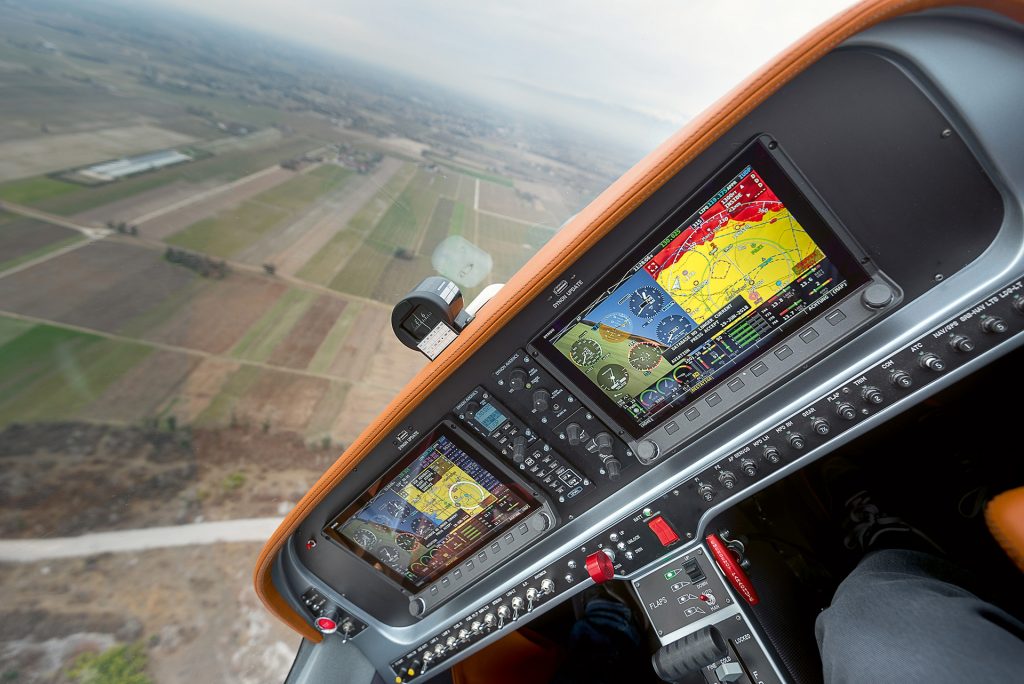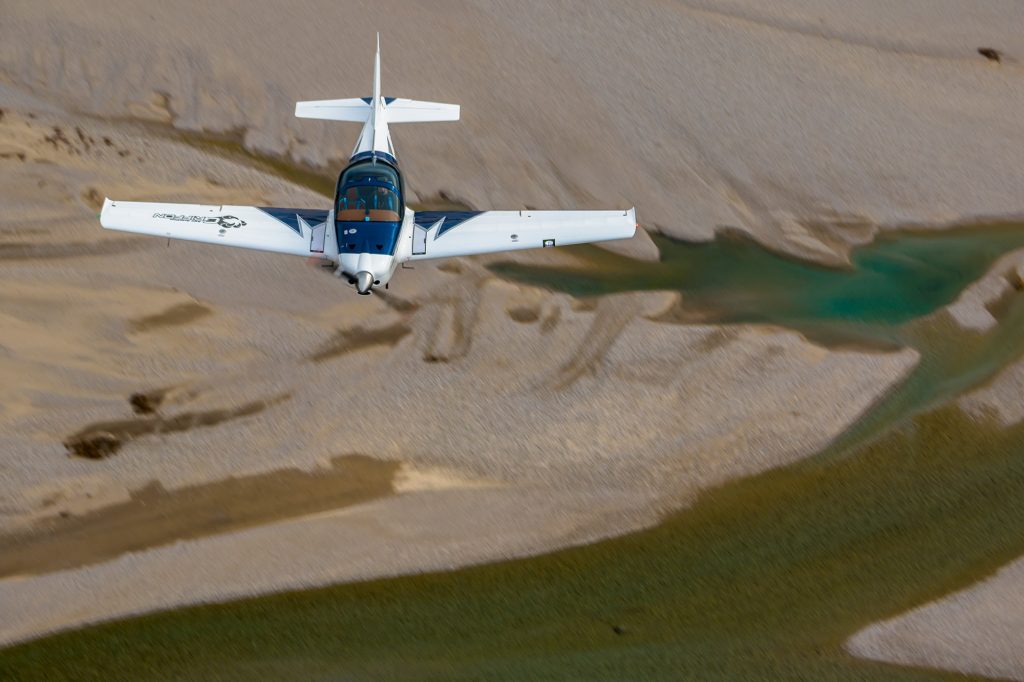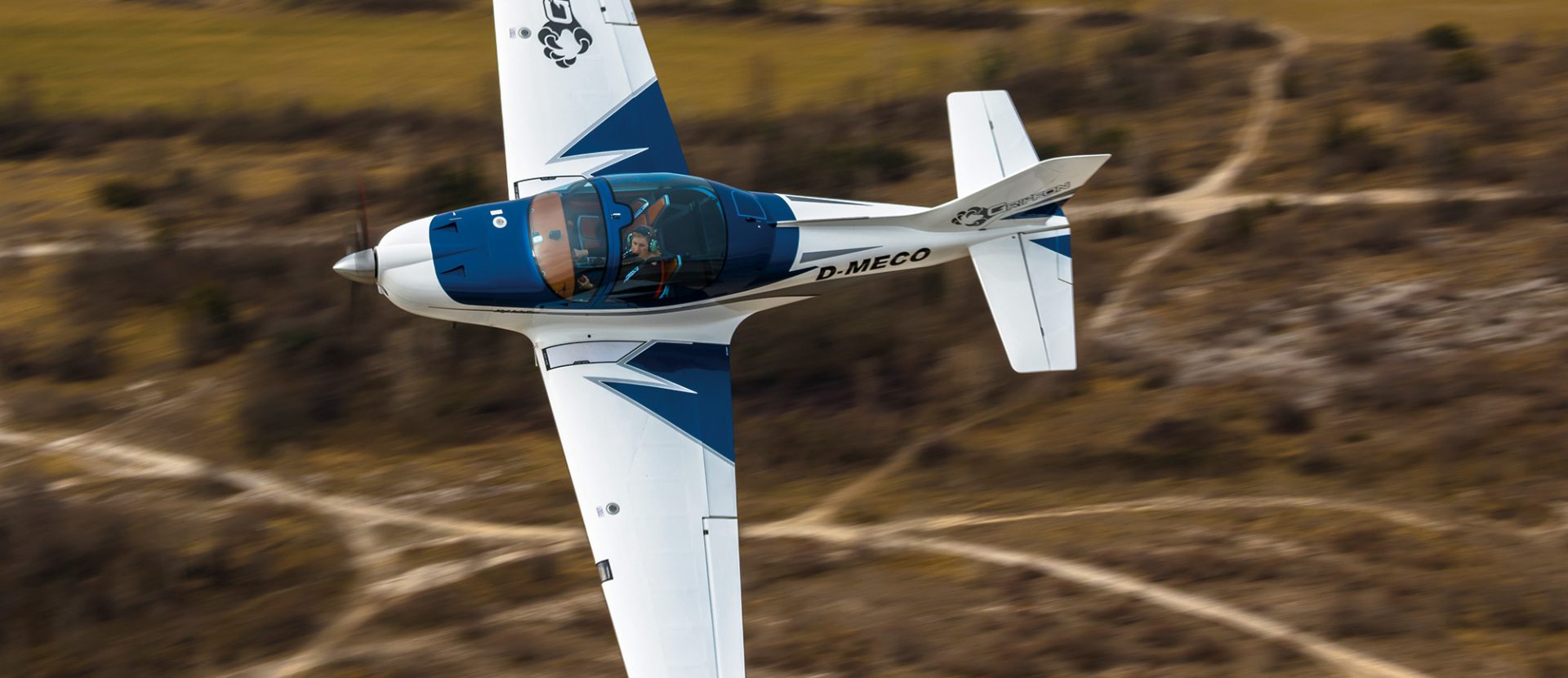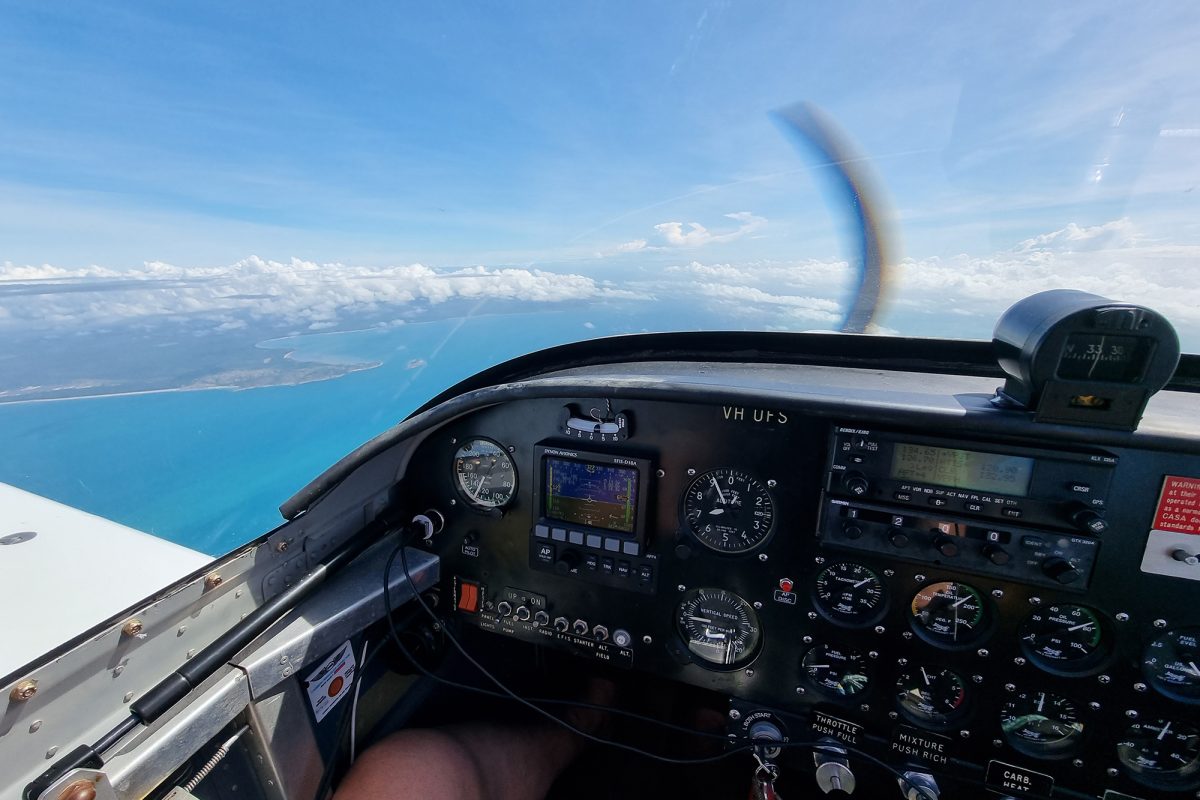The Alpi Pioneer 300, equipped with the Rotax 912 ULS, is what happens when beautiful Italian design meets powerful Austrian engineering. A successful blend of tradition and modernity, Alpi Aviation has developed an original option for private owners and aeroclubs by offering an affordable, economical, high-performance travel aircraft.
There’s an old Italian proverb that says, “In the small barrel, there is good wine.”. In other words: things don’t have to be big to be good. It’s an expression that seems to perfectly suit the Alpi Pioneer 300 912 ULS. It is both a small bottle, as a small two-seater, and a good vintage, because it is full of assets: style, piloting pleasure, performance, economy and safety. The formula offered by Alpi Aviation is unique and makes it difficult to categorize this aircraft into a light aviation market box.
If Georges-Louis Leclerc de Buffon, the 18th century Enlightenment naturalist famous for his classification of species, had to deal with the Pioneer 300, he would have been hard-pressed to give it a single label. Of course, according to the Darwinian theory of aeronautical evolution, one can hang it up with its ancestors – the Asso V Champion, the Sequoia Falco F8L by Stelio Frati, the SIAI-Marchetti SF-260 – or bring it closer to his siblings – of which the Pioneer 200, 400 and 330 Acro are part

TRADITION & MODERNITY
The aircraft which has just landed on runway 20 at Gap-Tallard (LFNA) does not go unnoticed. Beautiful line, superb wing terminated by long flight feathers inclined outwards which are its impressive carbon winglets, undercarriage retracting to the narrow-gauge Messerschmitt 109 style, plush fuselage with soft curves, aerodynamic engine cover, a sliding, rounded canopy reminiscent of the Navion and wide fin ridge. The proportions are elegant and catch the eye of the pilot sensitive to the charms of Italian lines.
Engine stopped; we approach the bird. Nothing is more tempting than to stroke its feathers and, again, a nice surprise: the composite finish is impeccable. This machine seems straight from the factory and made worthy of a certified device; and yet, it is a wooden plane, offered as a kit, CS-23 certified and flying under the CNSK regime. More than one pilot would be surprised.
The wings and fuselage are mostly made of wood, but covered with a carbon-glass skin to improve aerodynamics and enhance the quality. Only the control surfaces are canvas to gain in mass. The two half-wings are fixed to the fuselage in a metal sleeve and can be removed. As the tricycle gear is completely attached to the fuselage, the aircraft can remain on its wheels for transport: practical. The sliding canopy gives access to an impeccably finished cabin, which again gives that impression of a factory-built aircraft. Tasteful upholstery, garnet leather on the cap, the handle, the seats and the armrests.
The dash is simple, elegant and effective. An AvMap Ultra EFIS fits snug between an analogue altimeter, ASI, VSI and Turn & Slip, all directly in front of the left-hand seat, while a large AvMap EKP V provides all necessary navigation data from directly over the centre console. Other options are available from Dynon and Garmin and, being a kit build, opportunities are effectively endless.
THE RIGHT POWER
The Pioneer 300 is the happy result of a marriage between tradition and modernity. Happy, because the traditional wooden structure has the advantage of flexibility in turbulence, ease of repair and a low construction price. Modernity is displayed in its avionics and motorization. The P300 offers a comfortable safety envelope and low fuel consumption for high cruising speed. With all this equipment, the Pioneer 300 has a maximum take-off weight of 600kg. Two tanks are installed in the wings, of 40L each. Gaining access to the cockpit is a fairly simple process, sliding back the canopy and stepping up onto the wing. Forward visibility when taxiing in the bubble canopy is very good and steerability precise with Beringer brakes and wheels. There is enough storage space on board to accommodate the maps and documentation required for the flight. The riding position is correct, the seat adjustable forwards and backwards only.
EASY AND HEALTHY
Thanks to the temperature and pressure sensors and the pre-positioning of the throttle lever suggested by the computer, the Rotax starts with a quarter of a turn. The aircraft has redundant systems but is highly dependent on electricity. It is equipped with two generators. A small one for starting and, when it goes up to 2500 rpm, the second one starts churning. There are two electric pumps for the fuel system as well. We fly with one pump activated, take off and land with both. A notch of shutter, power up. Axle holding is easy, facilitated by good steerability and visibility to the front. 60kt rotation. The Pioneer 300 took off quickly, it took us less than 200m without wind.
The windshield pillar forces the rider to tilt their head to pick sides and break out of the three-quarter front blind spot, but you get used to it quickly and a natural stance sets in. The P300 is first and foremost a travel machine. We went up to 7,500 ft for some handling exercises. The rigid controls make piloting pleasant and precise and the aircraft remains homogeneous on all three axes. We quickly have it in hand. After 100kt in acceleration, the forces on the stick harden. The aircraft is equipped with electric trims on the 3 axes, comfortable. A few stall tests give the P300 good behaviour at low speeds. It’s a healthy plane. Nose low, the P300 accelerates quickly and we are quickly in the yellow arc, on our way to the Vne if we are not careful.
Landing is easy and without surprises. We were stopped before exiting the taxiway in less than 400m, without getting on the brakes. The undercarriage of the main wheels is a space without pipes or fittings, all in fibre and specially dedicated to the wheel. The aircraft will not be afraid of grass or greasy runways, small hatch fairings on the other hand will easily take gravel impacts. The landing gear is a robust part with a simple and reassuring mechanism. The nose wheel is retractable but does not retract completely; it protects the passenger compartment in the event of retracted gear or forced landing.
WHO IS IT FOR?
The Pioneer 300 is a pleasant surprise. It is attractive both in substance and in form. But who is this machine for? Certainly, the market is for individuals who want to travel without any hesitation and for certain flying clubs who would dare to take the construction step. It can perform two-seater or advanced school travel missions with its variable pitch, retractable gear and modern avionics. All this for an affordable hourly cost (the plane consumes UL91 or auto gasoline).
This construction step is the biggest step to take. One would dream clubs of amateur builders merge with flying clubs to allow new fleets to emerge. Do your flying clubs have a few retired pilots who would like to embark on building a club funded aircraft? Does your mechanic have free time?
Silvio Vio, the French importer of the brand, and Eddy Dockendorf, the Luxembourg importer, estimate the kit construction time at around 750 hours. That is to say, six months at the rate of four hours a day. A beautiful plane and an interesting potential project, the P300 will not pose any difficulty on the piloting side. It is a beautiful plane that flies well.
A MEMBER OF THE FAMILY
The Pioneer 300 is a fantastic machine in its own right, but it also sits in the middle of a family of extremely wellmade, beautiful looking aircraft. The lighter Pioneer 200 is a neat little training aircraft, equipped with an 80hp engine and a fixed-gear tricycle undercarriage. In line with the streamlined Italian designs of it’s larger siblings, the P200 is the kind of training aircraft that students dream about having their photo taken in front of after their first solo.
For those looking beyond the RA category but are enamoured with the sleek, elegant design of the P300, fear not. Alpi also offer the Pioneer 400, a 4-seater variant boasting a similar design and fitted with the new 140hp Rotax 915iS. Capable of cruising at 130kt with a fuel consumption rate of 20L/h, the Pioneer 400 boasts a range of 900nm, establishing itself as a premier option for air touring. Alpi Aviation are currently looking for an Australian sales agent. If you’ve ever considered getting into aircraft sales, the Pioneer range might just be your golden ticket. More than 1000 Pioneers across the family are already flying, a testament to the wonderful design of this piece of Italian class.










